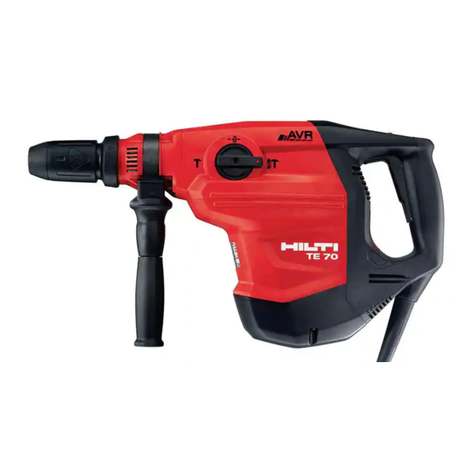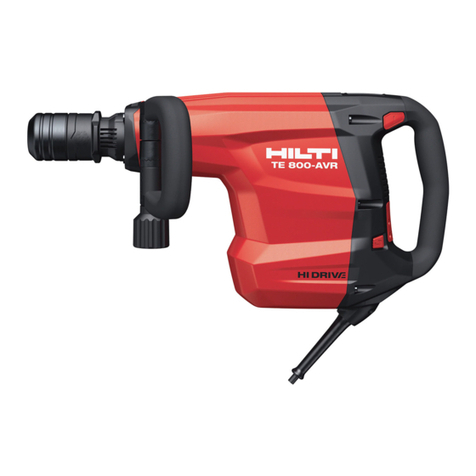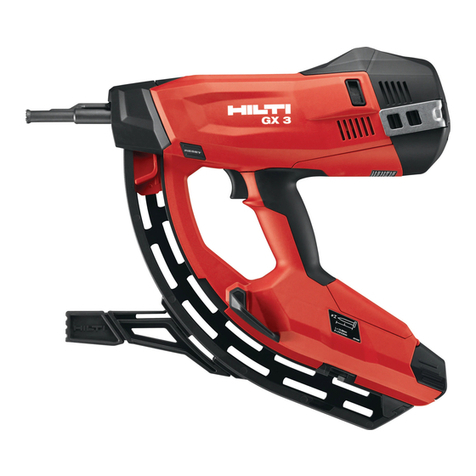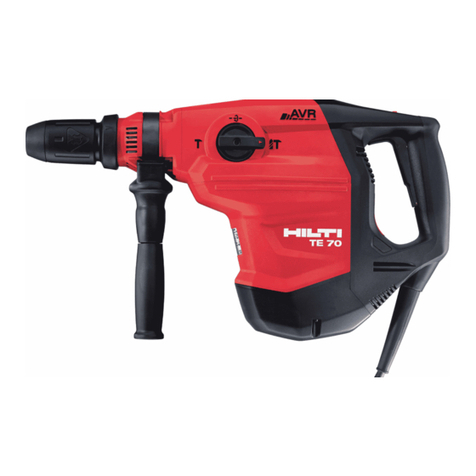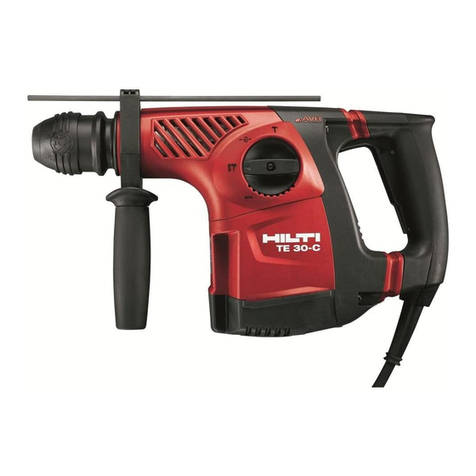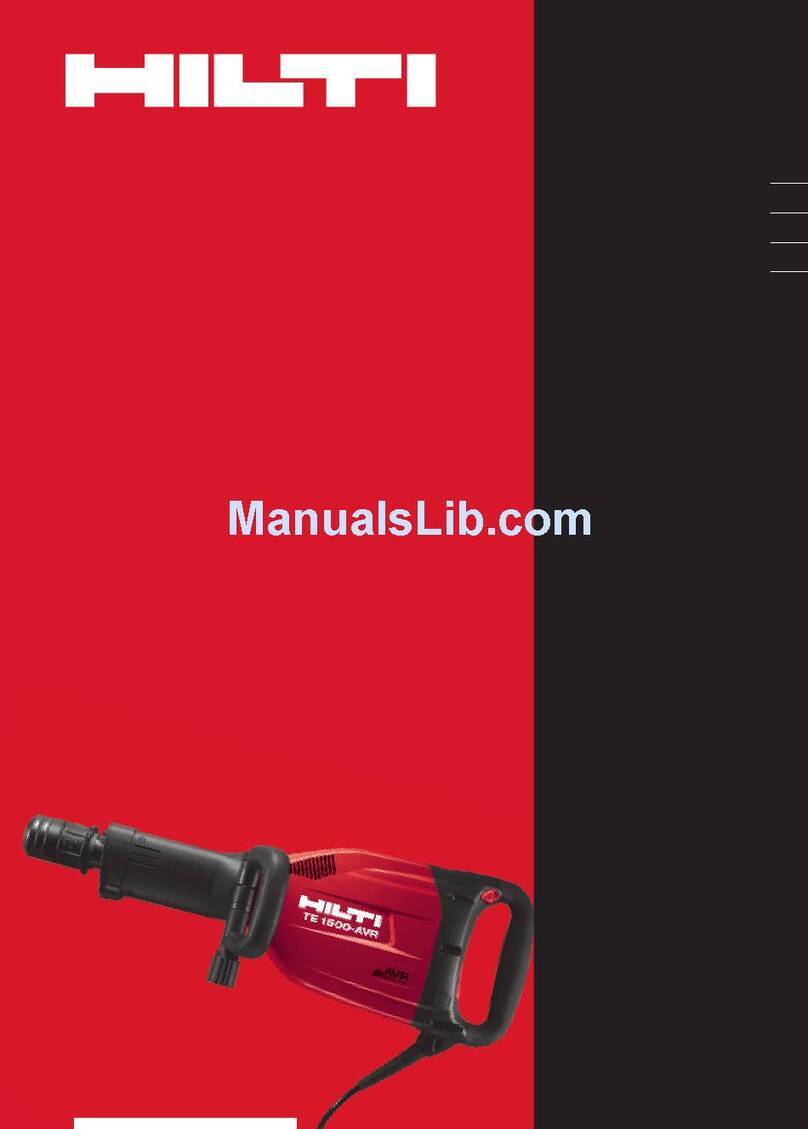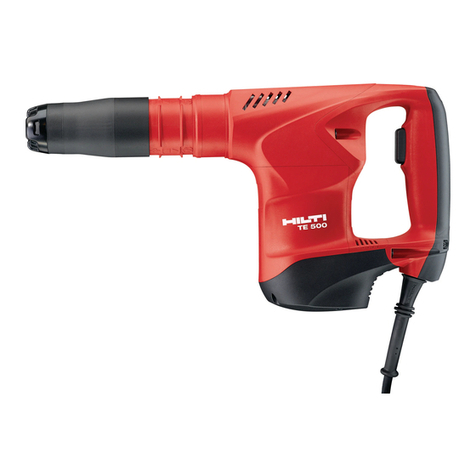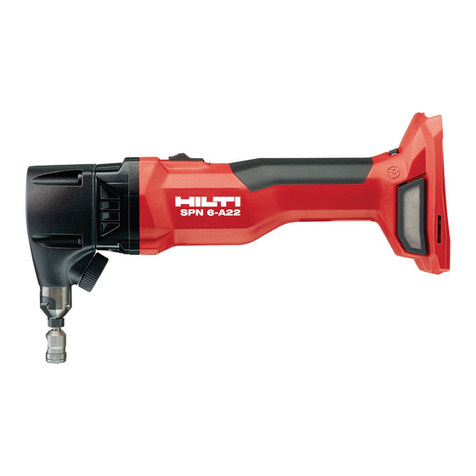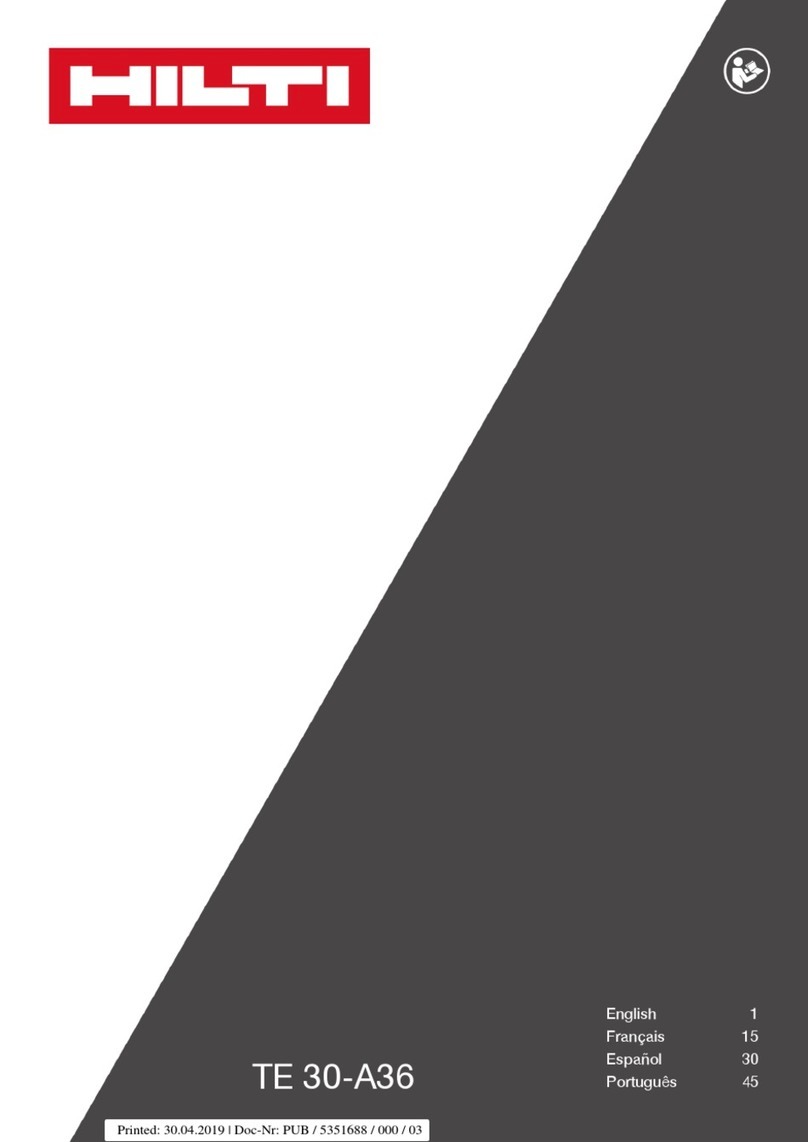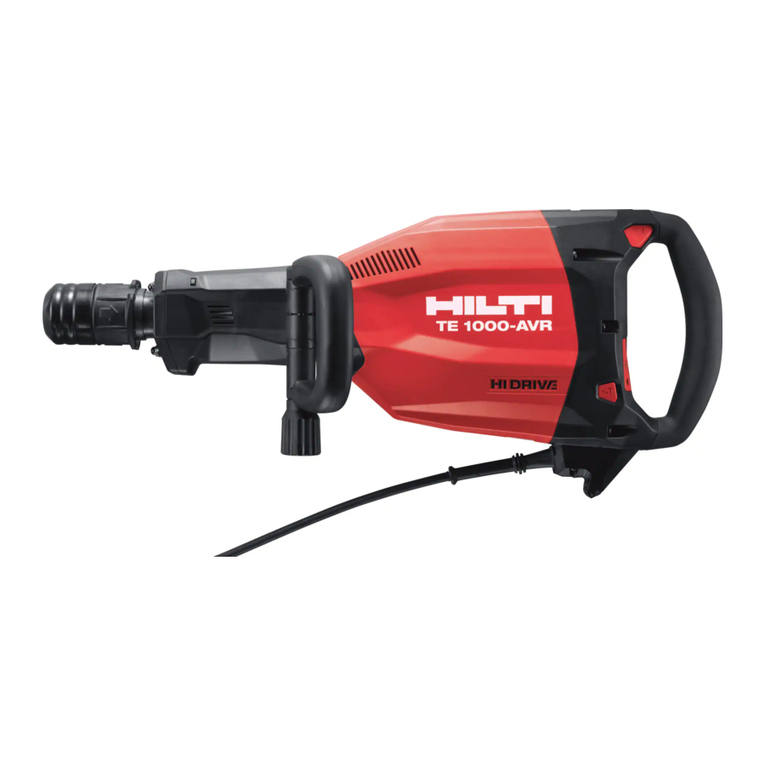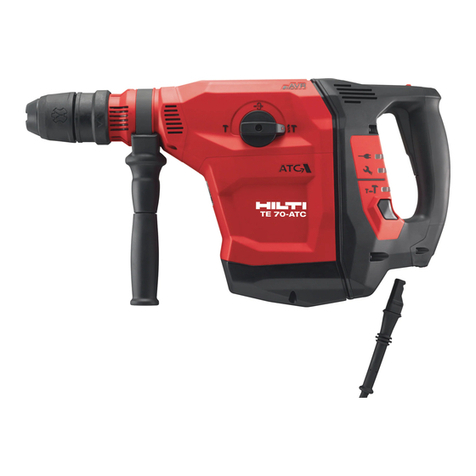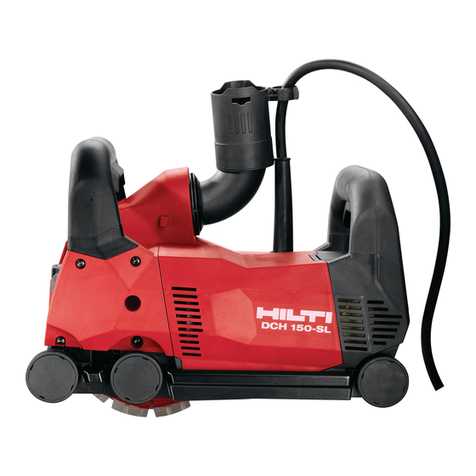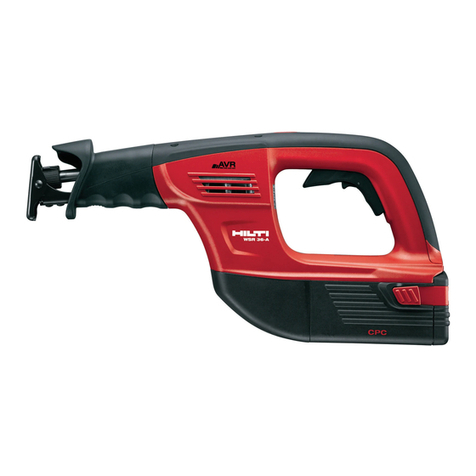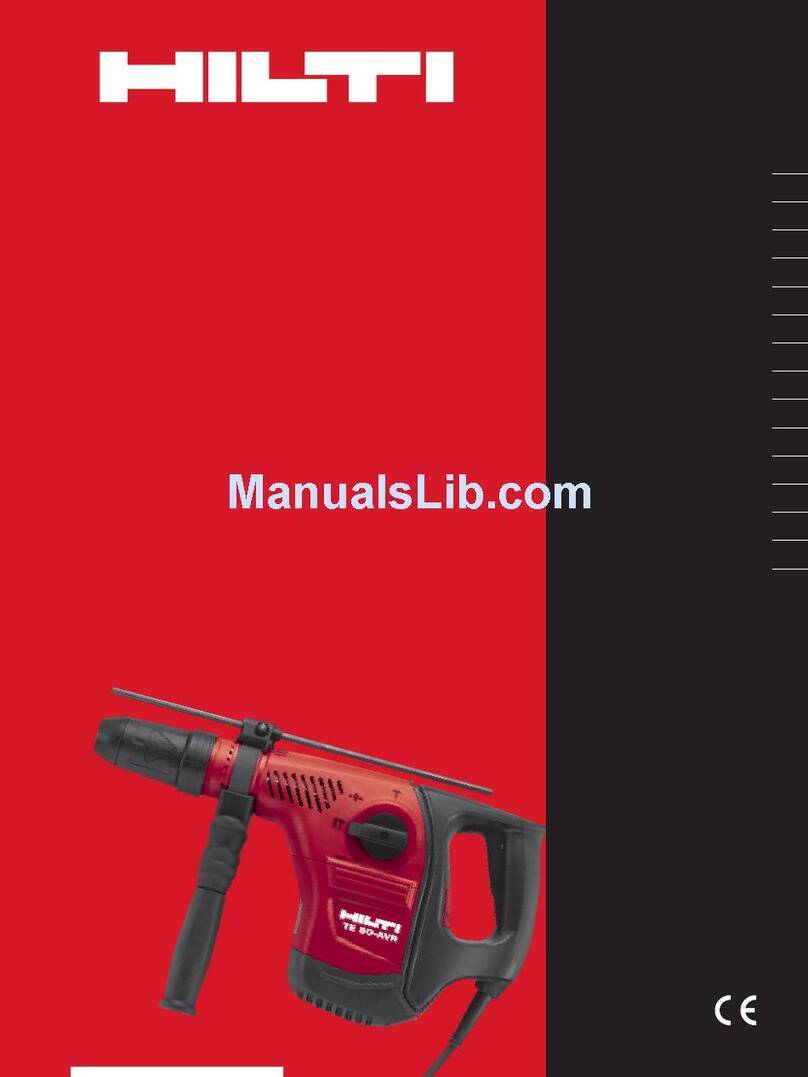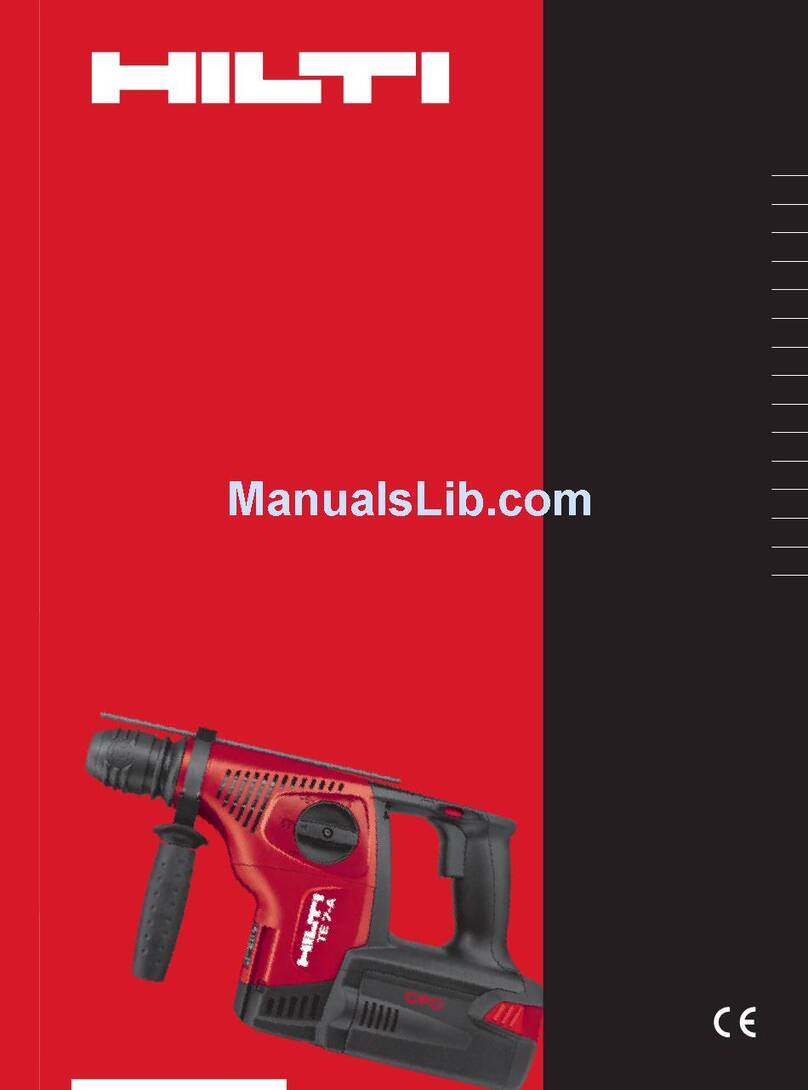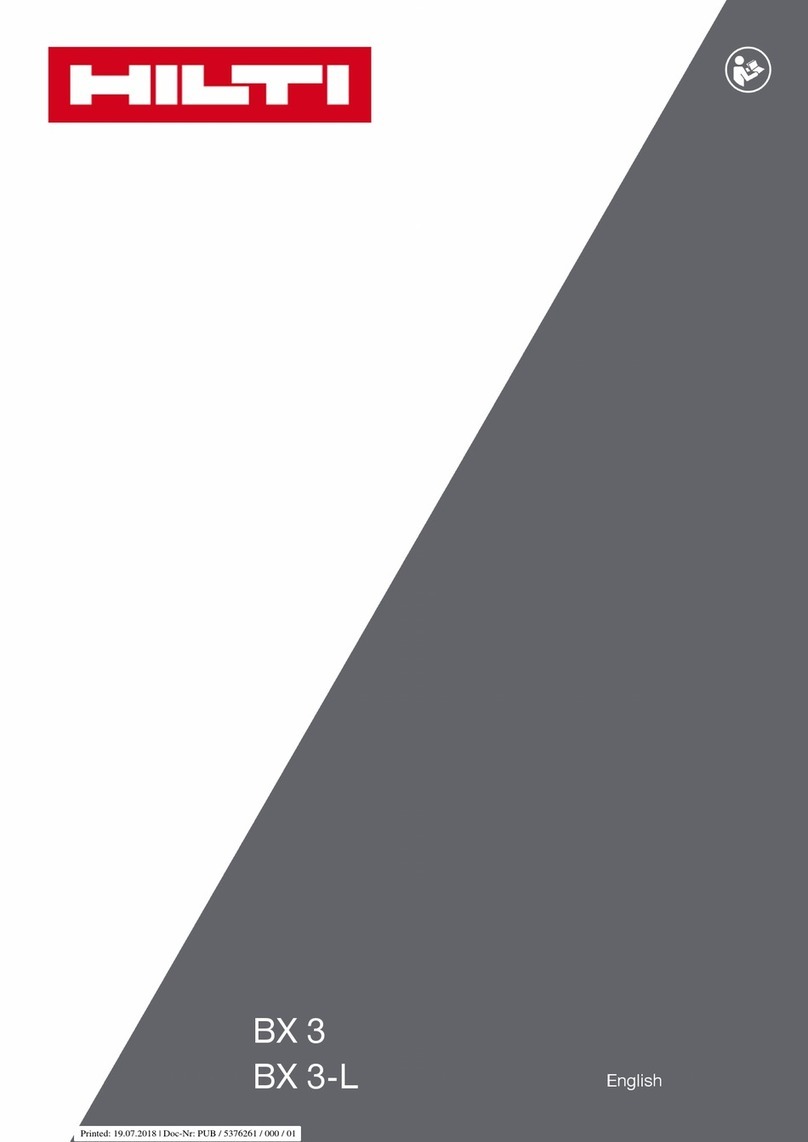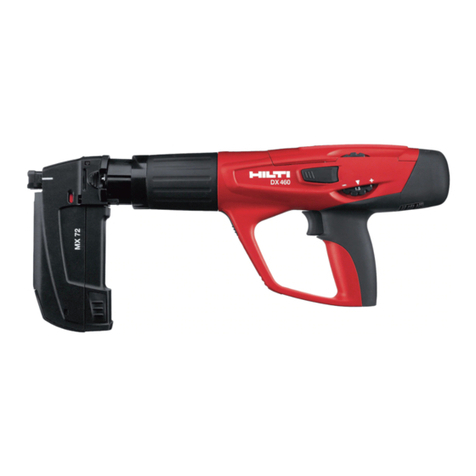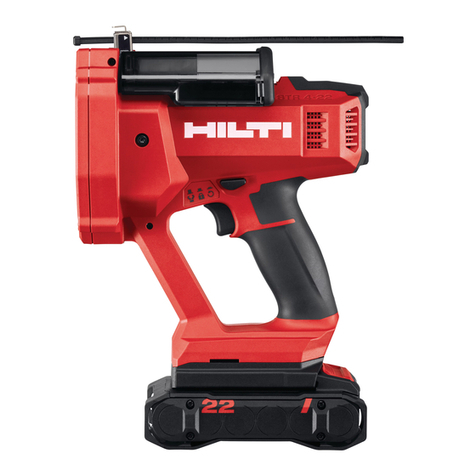3
▶Do not use the power tool if the switch does not turn it on and off. Any power tool that cannot be
controlled with the switch is dangerous and must be repaired.
▶Disconnect the plug from the power source and/or the battery pack from the power tool before
making any adjustments, changing accessories, or storing power tools. Such preventive safety
measures reduce the risk of starting the power tool accidentally.
▶Store idle power tools out of the reach of children and do not allow persons unfamiliar with the
power tool or these instructions to operate the power tool. Power tools are dangerous in the hands
of untrained users.
▶Maintain power tools. Check for misalignment or binding of moving parts, breakage of parts and
any other condition that may affect the power tool’s operation. If damaged, have the power tool
repaired before use. Many accidents are caused by poorly maintained power tools.
▶Keep cutting tools sharp and clean. Properly maintained cutting tools with sharp cutting edges are
less likely to bind and are easier to control.
▶Use the power tool, accessories and tool bits etc. in accordance with these instructions, taking
into account the working conditions and the work to be performed. Use of the power tool for
operations different from those intended could result in a hazardous situation.
Service
▶Have your power tool serviced by a qualified repair person using only identical replacement parts.
This will ensure that the safety of the power tool is maintained.
2.2 Hammer safety warnings
▶Wear ear protectors. Exposure to noise can cause hearing loss.
▶Use auxiliary handles, if supplied with the tool. Loss of control can cause personal injury.
▶Hold power tool by insulated gripping surfaces, when performing an operation where the cutting
accessory may contact hidden wiring or its own cord. Cutting accessory contacting a "live" wire may
make exposed metal parts of the power tool "live" and could give the operator an electric shock.
2.3 Additional safety instructions for breakers
Personal safety
▶Use the product only when it is in technically faultless condition.
▶Never tamper with or modify the tool in any way.
▶Use the auxiliary grip supplied with the tool. Loss of control can cause personal injury.
▶Apply appropriate safety measures at the opposite side of the workpiece in work that involves breaking
through. Parts breaking away could fall out and / or fall down causing injury to other persons.
▶Always hold the power tool with both hands on the grips provided. Keep the grips clean and dry.
▶Hold the power tool by the insulated gripping surfaces when performing work in which the accessory
tool might come into contact with concealed wiring. If the accessory tool comes into contact with a live
wire, metal parts of the power tool can also become live, resulting in an electric shock.
▶Wear suitable protective glasses, a hard hat, ear protection, protective gloves and light respiratory
protection while using the tool.
▶Wear protective gloves also when changing the accessory tool. Touching the accessory tool presents a
risk of injury (cuts or burns).
▶Wear eye protection. Flying fragments present a risk of injury to the body and eyes.
▶Before starting work, check the hazard class of the dust that will be produced when working. Use
an industrial vacuum cleaner with an officially approved protection class in compliance with the locally
applicable dust protection regulations. Dust from materials such as lead-based paint, certain types of
wood and concrete/masonry/stone containing quartz, minerals or metal can be harmful to health.
▶Make sure that the workplace is well ventilated and, where necessary, wear a respirator appropriate for
the type of dust generated. Contact with or inhalation of the dust may cause allergic reactions and/or
respiratory or other diseases to the operator or bystanders. Certain kinds of dust are classified as
carcinogenic such as oak and beech dust, especially in conjunction with additives for wood conditioning
(chromate, wood preservative). Material containing asbestos may be handled only by specialists.
▶Take breaks between working and do physical exercises to improve the blood circulation in your fingers.
Exposure to vibration during long periods of work can lead to disorders of the blood vessels and nervous
system in the fingers, hands and wrists.
Electrical safety
▶Before beginning work, check the working area for concealed electric cables or gas and water pipes.
External metal parts of the power tool may become live, presenting a risk of electric shock, if you damage
an electric cable accidentally.
Printed: 01.08.2016 | Doc-Nr: PUB / 5210096 / 000 / 02

